
Roots
To journey into the realm of botanicals offering both humectant and emollient properties for textured hair is to trace pathways etched by ancestral hands, a deep remembering of knowledge held within soil and spirit. It is to walk a path where scientific understanding meets the whisper of ancient practices, celebrating the enduring wisdom of those who understood hair as a living crown, a story spun from history itself. For those with hair that coils, kinks, and waves, hydration is not merely a desire; it is a fundamental need, a conversation with the very structure of each strand. And in this dialogue, botanicals speak a language both nourishing and protective.

Hair’s Intricate Fabric and Ancestral Wisdom
The very anatomy of textured hair—its unique elliptical shape, the varying twists and turns along the shaft, the distinct architecture of its cuticle layers—renders it inherently predisposed to moisture loss. This natural inclination means moisture, though easily absorbed through the open cuticles, can just as quickly escape, leaving strands feeling parched and vulnerable. This inherent characteristic was observed and understood by those who lived intimately with nature, long before the advent of microscopes and molecular diagrams. Their wisdom, passed down through generations, taught how to draw moisture in and then, crucially, how to hold it close.
Consider the hair’s outermost layer, the cuticle. It acts like a protective shield, composed of overlapping scales. In straight hair, these scales lie flat. For textured hair, however, these cuticles often stand slightly raised, particularly at the curves of the strand.
This subtle difference creates a pathway for water molecules to enter, giving that lovely, soft, hydrated feel. But it also presents an exit route, allowing that precious moisture to dissipate into the surrounding atmosphere, leaving the hair susceptible to dryness and breakage. This is where the dual function of humectants and emollients becomes a dance of ancient care and scientific validation. Humectants draw water in, acting as benevolent gatherers, while emollients then lay a gentle seal, like a tender embrace, to hold that life-giving moisture within.

The Essential Lexicon of Textured Hair Hydration
In our contemporary lexicon of hair care, certain terms help us unravel the complex interplay of moisture and its retention. Yet, these modern words often echo older, unspoken understandings.
- Humectants ❉ These are substances that attract water. They draw moisture from the environment into the hair shaft, akin to a sponge soaking up water. They work best in environments with moderate to high humidity, preventing moisture from escaping the hair. Examples often found in botanical traditions include glycerin, honey, and aloe vera.
- Emollients ❉ These ingredients create a protective layer on the hair’s surface. They smooth the hair cuticle and seal in moisture, providing softness, flexibility, and a barrier against environmental elements. Plant oils and butters are prime examples, many of which have been used for centuries across diverse cultures.
- Occlusives ❉ Though often mentioned alongside emollients, occlusives are a specific type of emollient that form a thicker, more impenetrable barrier, largely preventing water from escaping. While some emollients also have occlusive properties, not all do.
When botanicals possess both humectant and emollient properties, they stand as particularly potent allies for textured hair. They offer a comprehensive approach to moisture management, first inviting water in and then securing it, mirroring the holistic philosophies of ancestral hair practices that sought both internal health and external protection.

Ancient Echoes of Botanical Power
Across the African diaspora, the use of botanicals for hair care is not a recent discovery; it is a foundational pillar of communal life, health, and spiritual practice. These plants were not merely “ingredients”; they were gifts from the earth, understood through generations of observation and application. For instance, the history of Shea Butter (Vitellaria paradoxa), harvested from the shea tree native to West and Central Africa, spans thousands of years. African women have used this rich emollient and humectant to protect skin from harsh sun and wind and to nourish hair.
Its preparation, a laborious, traditionally female-led process, has been a cornerstone of West African economies and cultural rites for centuries, passed from mother to daughter. This tradition underscores a deep understanding of its properties, long before chemical analysis could explain its fatty acid composition, vitamins A and E, and its ability to seal in moisture while also offering a degree of natural UV protection.
Ancestral wisdom of textured hair care recognized moisture’s fleeting nature, leading to the dual application of botanicals that attract and then seal hydration.
Another botanical with a long and storied past is Aloe Vera. From ancient Egypt to the Caribbean, its succulent leaves have provided a cooling, soothing gel. The ancient Egyptians used aloe vera for various purposes, including skincare and possibly hair care, reflecting an early recognition of its hydrating properties. Its gelatinous interior, rich in vitamins, minerals, and enzymes, functions as a natural humectant, drawing water to the hair.
Yet, its ability to coat the hair strand also lends it emollient qualities, smoothing the cuticle and aiding in the retention of moisture. This dual nature made it an invaluable resource in climates where hydration was a constant battle. The continued use of aloe vera in Caribbean hair traditions further illustrates this enduring knowledge, passed down through generations.
| Botanical Element Shea Butter (Vitellaria paradoxa) |
| Ancestral Usage (Heritage Context) Used by women in West Africa for centuries to protect skin from sun and wind, and to moisturize hair. Seen as sacred, a symbol of fertility and purity. |
| Scientific Insight (Humectant/Emollient Properties) Rich in fatty acids (oleic, stearic, linoleic), providing potent emollient properties that seal moisture. Vitamins A and E contribute to nourishment and a subtle humectant effect. |
| Botanical Element Aloe Vera (Aloe barbadensis miller) |
| Ancestral Usage (Heritage Context) Applied in ancient Egypt for soothing and hydrating skin, also a staple in traditional Caribbean hair care for moisture and scalp health. |
| Scientific Insight (Humectant/Emollient Properties) Its mucilaginous gel acts as a strong humectant, drawing water to the hair. It also possesses emollient qualities due to its ability to coat and smooth the hair shaft, aiding moisture retention. |
| Botanical Element Flaxseed (Linum usitatissimum) |
| Ancestral Usage (Heritage Context) Historically used for fiber and as a food source, its gel has been an ancestral styling aid in some cultures for curl definition. |
| Scientific Insight (Humectant/Emollient Properties) The mucilage from flaxseeds is a powerful humectant, attracting and binding water. The omega-3 fatty acids in its oil offer emollient benefits, smoothing the cuticle and providing a light seal. |
| Botanical Element Honey |
| Ancestral Usage (Heritage Context) Valued in ancient Egypt and other cultures for moisturizing skin and hair, often mixed with oils for treatments. |
| Scientific Insight (Humectant/Emollient Properties) A natural humectant that attracts and holds water to the hair shaft. Its slight stickiness can also contribute to a light emollient effect, helping to smooth and define strands. |
| Botanical Element Castor Oil (Ricinus communis) |
| Ancestral Usage (Heritage Context) Employed by ancient Egyptians and in Caribbean traditions for hair growth, strength, and as a protective oil. |
| Scientific Insight (Humectant/Emollient Properties) A dense emollient that coats the hair, providing significant moisture sealing and a protective barrier. Its humectant capabilities are less pronounced but it helps prevent moisture evaporation. |
| Botanical Element These botanical gifts from the earth offer a tangible link between the hair care practices of our ancestors and the scientific understanding of textured hair needs today. |

Hair Growth Cycles and Influencing Factors
The vitality of hair, its growth, and its overall health are deeply influenced by a confluence of internal and external factors. Our ancestors understood this instinctively, observing the impact of diet, environment, and holistic well-being on the hair’s condition. Textured hair, particularly, often experiences challenges in length retention due to its propensity for dryness and tangling, which can lead to breakage. This is where the sustained application of humectant-emollient botanicals becomes not just about immediate softness, but about supporting the hair’s journey through its cycles.
When hair is adequately moisturized by humectants and then protected by emollients, it becomes more supple, less prone to the friction and breakage that can impede growth and visible length. This symbiotic relationship between proper hydration and protection reduces mechanical stress on the hair. In times past, without access to synthetic conditioners or specialized styling tools, the regular anointing of hair with plant-derived preparations was a practical necessity for maintaining integrity and encouraging length.
These practices often involved a deep understanding of seasonal changes and regional plant availability, adapting care rituals to reflect the subtle shifts in the environment that could affect hair’s moisture balance. The wisdom of these care practices, honed over centuries, reflects a profound connection to the body and its symbiotic relationship with the earth’s offerings.

Ritual
The ritual of hair care, particularly for textured strands, has always been more than a mere act of cleansing or styling. It is a sacred exchange, a moment of connection with self and with the continuum of ancestral practices. The botanicals that offer both humectant and emollient properties have been silent participants in these rites for millennia, their dual capabilities weaving themselves into the fabric of daily and ceremonial hair traditions. They are the unseen forces that have allowed elaborate styles to hold, protected hair from environmental rigors, and contributed to the overall health that underpins cultural expressions of beauty.

Protective Styling Through Generations
Protective styles—braids, twists, cornrows, and buns—are hallmarks of textured hair heritage. These styles minimize manipulation, reduce breakage, and shield the hair from external elements. But what allowed these styles to truly protect and endure across days, weeks, even months, was the careful preparation and ongoing sustenance of the hair within them. Here, humectant-emollient botanicals played a quiet yet critical role.
Before braids were plaited or twists meticulously coiled, hair was often saturated with concoctions designed to soften, lubricate, and retain moisture. Consider the Basara Arab women of Chad, renowned for their exceptionally long, thick hair. Their traditional use of Chebe Powder, a mixture of herbs, seeds, and plants, involves applying a paste that coats and protects the hair. While Chebe itself is not a humectant-emollient botanical in the singular sense, its efficacy relies on being mixed with nourishing oils, which provide the crucial emollient seal and support moisture retention. This ancient practice highlights the understanding that protective styling requires a fortified, well-conditioned base.
The art of hair plaiting, often a communal activity across African cultures, strengthened social bonds while preserving cultural identity. During these sessions, the application of various butters and oils was an inherent part of the process, ensuring the hair was pliable, strong, and prepared for its extended period of styling. These ancestral methods intuitively paired moisture-attracting elements with sealing agents, even if the precise scientific classifications were yet unknown.
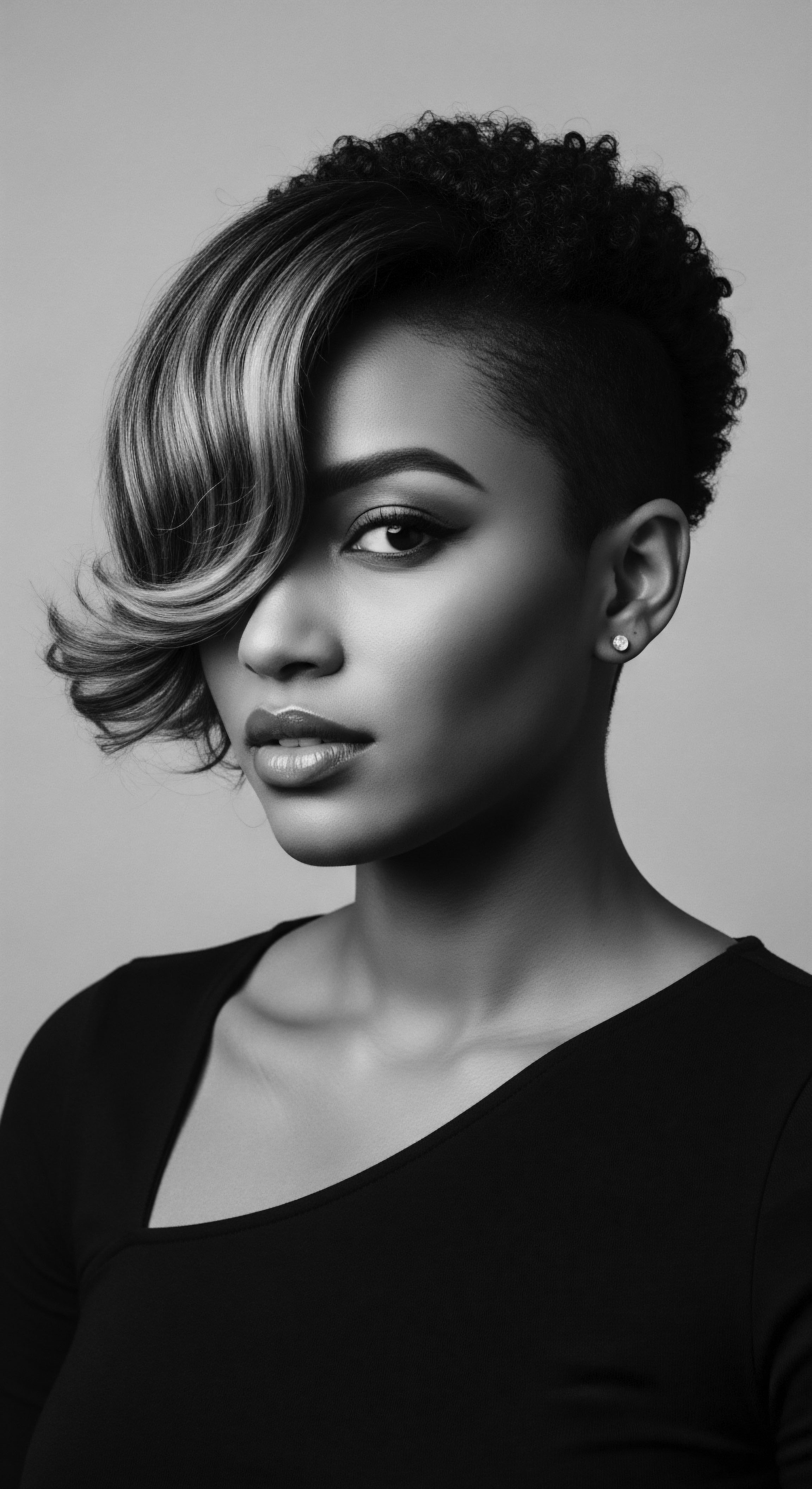
Natural Styling and Defined Coils
The quest for defined curls and coils, free from frizz, is a modern aspiration that echoes ancient desires for neatness and aesthetic appeal. Botanicals offering both humectant and emollient properties are particularly suited to this purpose. Take Flaxseed Gel, for instance. While its documented history as a dedicated hair styling gel in Europe might be more recent than commonly believed, its properties align seamlessly with traditional needs for hold and moisture.
The mucilage from flaxseeds, when boiled, creates a gel that is a potent humectant, drawing in moisture and providing a soft, flexible hold that helps ‘clump’ curls, reducing frizz. The inherent oils within flaxseeds also offer a light emollient layer, conditioning the hair and providing shine. In cultures where hair was styled to specific shapes and patterns, a natural substance that could offer both hydration and gentle adhesion would have been invaluable.
Hair rituals, steeped in heritage, found their enduring efficacy in botanicals that harmonized moisture-drawing and sealing properties, allowing textured strands to remain protected and pliable.
Another plant that exemplifies this dual function in natural styling is Okra. While less widely commercialized than aloe vera or flaxseed, the mucilaginous liquid extracted from okra pods acts as a humectant. When combined with its inherent fatty acids, which provide emollient qualities, okra can offer a natural, hydrating styling aid that defines curls without stiffness. This mirrors the resourcefulness of ancestral communities who utilized local flora for their hair care needs, observing and adapting plant properties to achieve desired effects.

What Botanical Elixirs Supported Ancient Styling?
Beyond the well-known shea butter and aloe vera, many other botanicals, steeped in regional heritage, contributed to the efficacy of ancient styling. These often combined both hydrating and conditioning actions, even if one property was more pronounced than the other.
- Honey ❉ A gift from nature, honey was used in ancient Egypt and other cultures for its moisturizing properties. As a potent humectant, it draws moisture from the air. Its slightly viscous nature also allows it to coat the hair, offering a light emollient effect, helping to smooth the cuticle and add natural luster. This duality made it a valuable addition to ancient hair balms and treatments, often mixed with oils for pliability.
- Baobab Oil ❉ Extracted from the majestic “tree of life” in Africa, baobab oil is rich in fatty acids, making it a strong emollient that coats and protects the hair. It also contains polysaccharides that offer some humectant properties, drawing in moisture. Its use is deeply rooted in West African traditions, where it has been employed for generations for both skin and hair health, aiding in maintaining softness and reducing dryness.
- Moringa Oil ❉ Hailing from Africa and India, moringa oil was highly valued in ancient Egypt for its lightweight texture and nourishing properties. It acts as an emollient, smoothing the hair and sealing in moisture, while also containing compounds that contribute to its hydrating qualities, providing a balance of nourishment and protection.

The Complete Textured Hair Toolkit and Its Roots
The tools of textured hair care, from wide-tooth combs carved from wood to hairpins fashioned from natural materials, are extensions of the hands that have tended to hair for generations. The very efficacy of these tools was enhanced by the conditioning power of botanicals. When hair is adequately softened and lubricated by humectant-emollient compounds, detangling becomes less damaging, and styling manipulation is eased.
The historical use of protective materials like silk or satin head wraps, often worn after the application of botanical hair treatments, further underscores the ancestral understanding of sealing in moisture and protecting delicate strands overnight or during daily activities. This holistic toolkit—the hands, the botanicals, the wraps, the combs—forms a cohesive system, each element supporting the hair’s health and the preservation of its inherent beauty, a testament to enduring heritage.
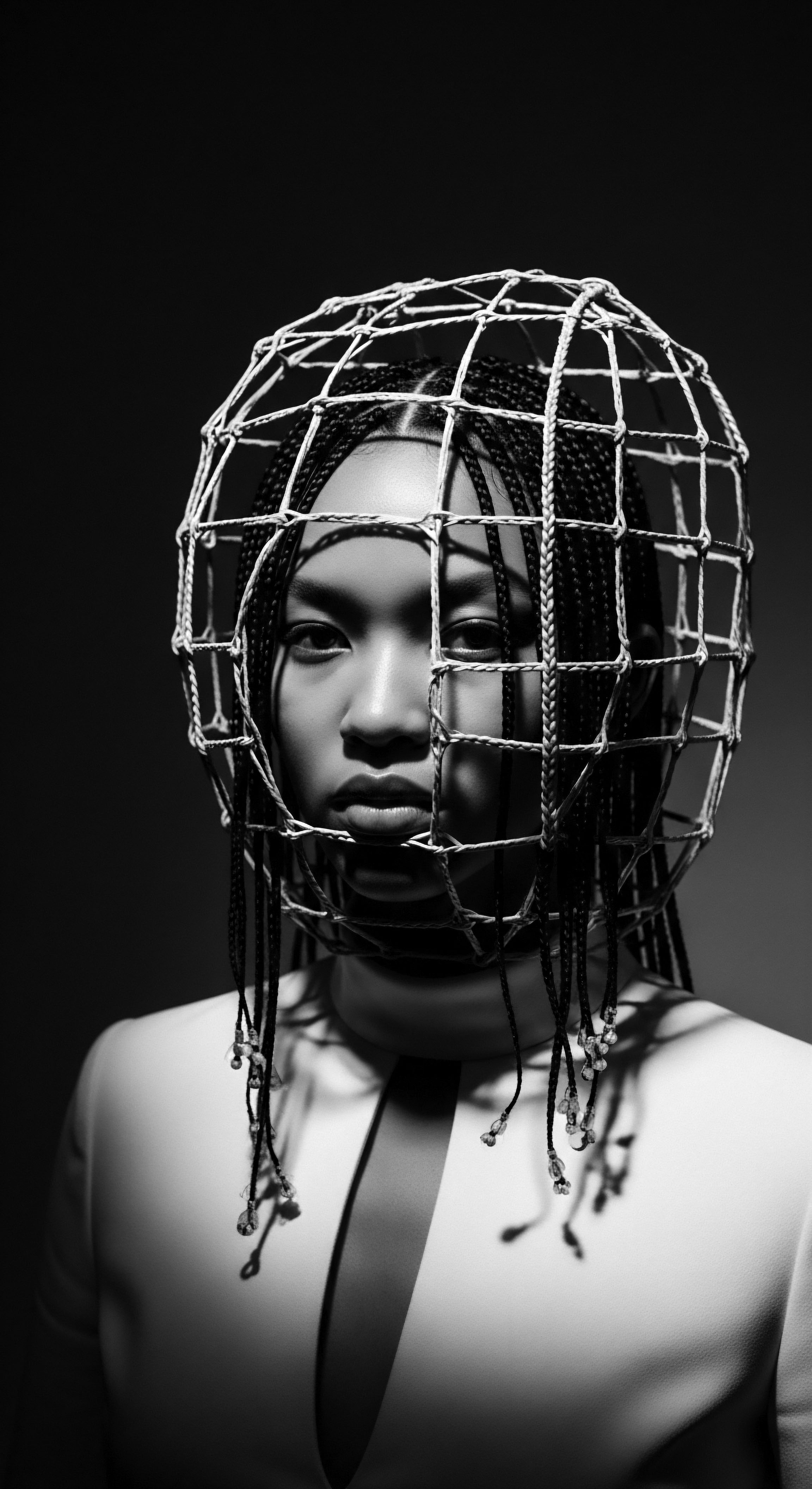
Relay
The onward relay of knowledge, from elder to youth, from distant past to present day, forms the living archive of textured hair care. This relay demonstrates how the insights into botanicals offering both humectant and emollient properties have been refined, adapted, and re-contextualized through centuries of Black and mixed-race experiences. It is a testament to the ingenuity and resilience embedded within hair traditions, constantly reaffirming that hair care extends beyond mere aesthetics; it is a profound act of self-preservation, cultural continuity, and identity formation.
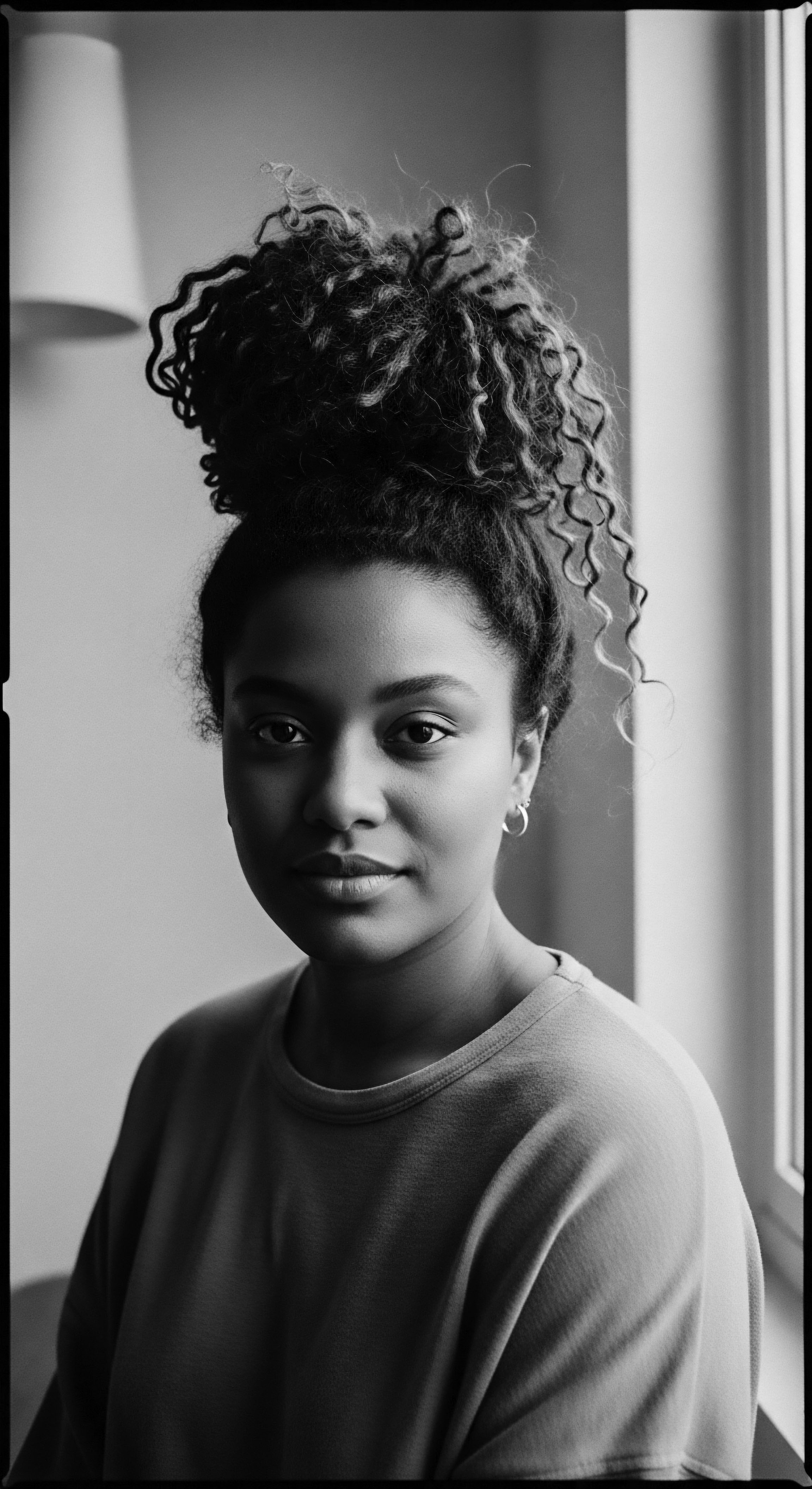
Building Personalized Textured Hair Regimens
The creation of a personalized hair care regimen for textured hair today echoes the bespoke practices of ancestral communities. There was no single, universal elixir; rather, understanding the individual’s hair porosity, density, and local climate guided the selection and combination of botanicals. The concept of balancing moisture (hydration from humectants) with sealing (protection from emollients) is a core tenet of modern textured hair care, a direct descendant of these ancient observational practices. Consider the practice of “layering” or the “LOC” method (Liquid, Oil, Cream), which gained popularity in contemporary natural hair communities.
This method, whether consciously or unconsciously, mirrors ancestral layering practices. The “Liquid” often contains water and humectants (like aloe juice or glycerin). The “Oil” and “Cream” components provide the emollient and occlusive layers, sealing in the moisture. This practical application of botanical properties, though framed in modern terminology, is a continuum of heritage-informed care.
The historical context of hair care for Black and mixed-race individuals has been one of adaptation and resistance. During periods of enslavement, traditional hair care tools and methods were forcibly removed, yet the resilience of ancestral knowledge ensured that hair remained a site of identity and resistance. Braiding, a communal activity, continued as a quiet act of preserving African identity.
Despite immense pressure to conform to Eurocentric beauty standards, knowledge of plants and their hair-benefiting properties persisted, often in secret, passed down through whispers and direct practice. This endurance speaks volumes about the intrinsic value placed on healthy hair, sustained through ingenious means.

The Nighttime Sanctuary
The evening ritual, a time for reflection and restoration, has long included dedicated care for textured hair. The protective wrap, often a simple piece of cloth, now recognized as a silk or satin bonnet, has a rich heritage. It is not merely a modern convenience; it is an evolution of practices that shielded hair from friction, preserved moisture, and maintained elaborate styles overnight. When humectant-emollient botanicals are applied to the hair before wrapping, their benefits are amplified.
The protective environment of the bonnet allows these compounds to work their magic, drawing moisture in and sealing it close, preventing the evaporation that cotton pillowcases might induce. This ritualistic preparation for rest ensures that the hair remains hydrated and less prone to tangling and breakage, ready for the dawn.
The journey of botanicals in textured hair care is an enduring testament to ancestral ingenuity, a continuous relay of knowledge adapting to new contexts while holding fast to the wisdom of the earth.
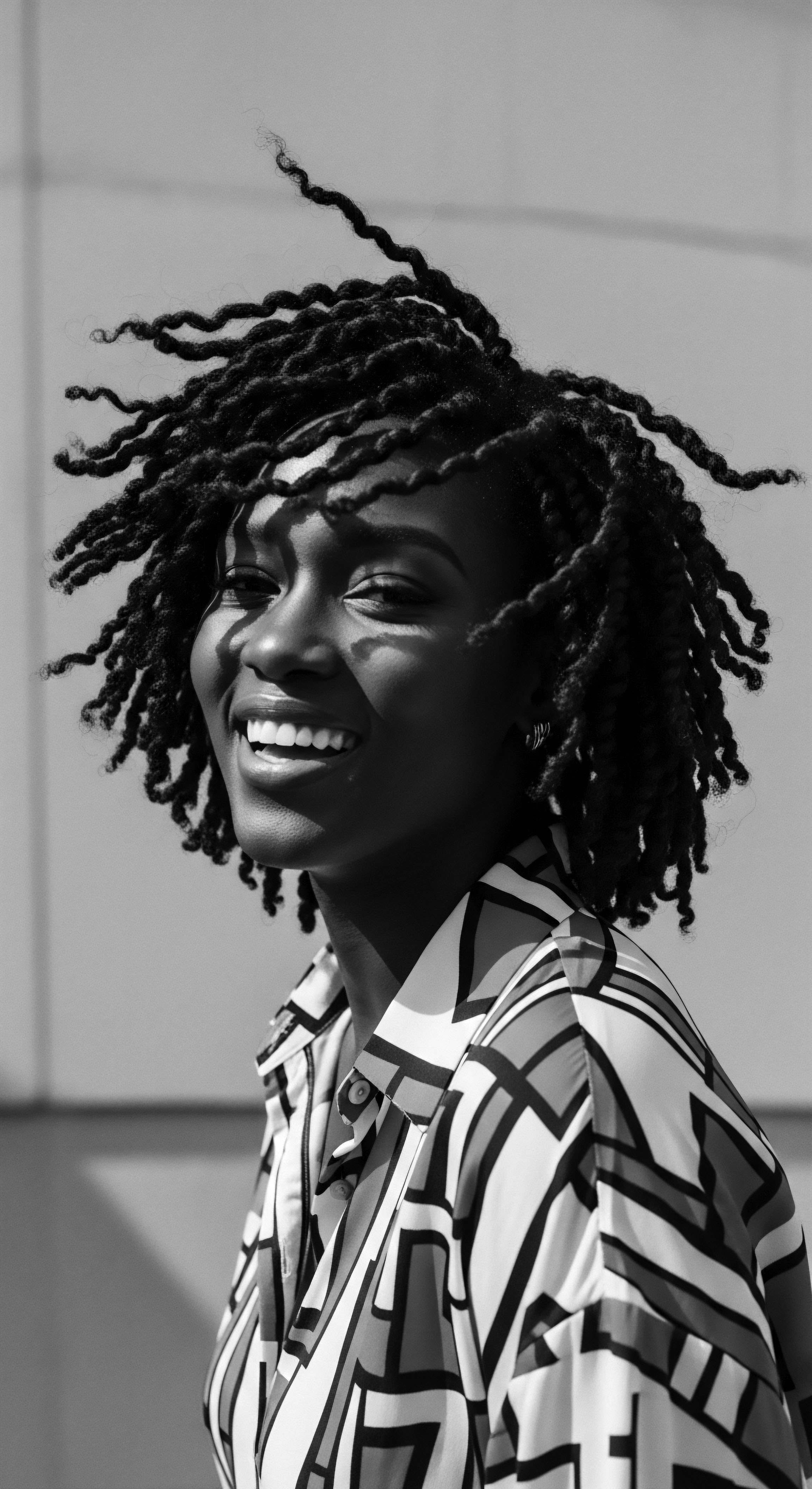
Ingredient Deep Dives for Textured Hair Needs
Let us consider a few botanicals that offer both humectant and emollient properties, underscoring their enduring relevance.
- Glycerin (Plant-based) ❉ A humectant, glycerin draws moisture from the air into the hair shaft. Its natural origins, often from vegetable oils, make it a gentle addition to formulas. While primarily a humectant, its presence can also lend a smoothing effect, aiding in the spread of emollients and contributing to a softer feel. This property has been implicitly valued in formulations throughout history, where plant-derived extracts would naturally contain similar hygroscopic compounds.
- Castor Oil (Ricinus communis) ❉ This thick, viscous oil has a long history of use in African and Caribbean hair care for its perceived ability to promote hair growth and strength. While primarily an emollient, forming a substantial protective layer that seals moisture, its unique composition also allows it to hold a degree of hydration, preventing rapid water loss. This makes it an ideal ingredient for thick, coily textures that crave robust sealing. Its use is deeply embedded in the historical memory of many Black and mixed-race communities as a potent hair fortifier.
- Mango Butter (Mangifera indica) ❉ Derived from the mango seed, this butter offers a luxurious texture and a wealth of fatty acids, providing excellent emollient properties that soften and seal the hair. It also contains natural sugars and polysaccharides, which can act as mild humectants, attracting a light layer of moisture. Its presence in various African hair traditions, particularly in regions where mangoes are abundant, speaks to its historical recognition as a nourishing hair treatment.
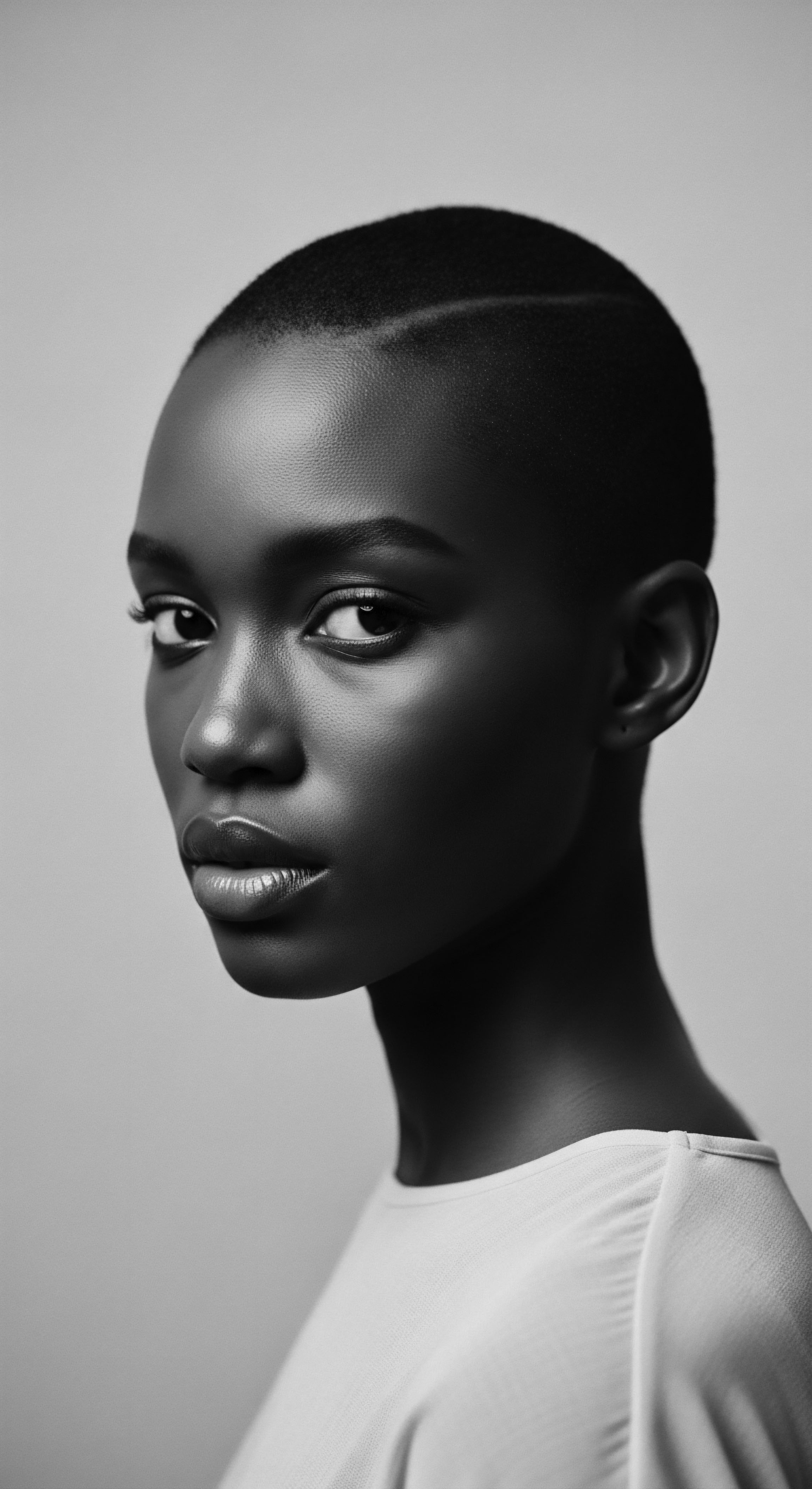
Which Botanical Blends Offer the Most Comprehensive Care?
The synergy of botanicals, rather than their isolated application, has often been the secret to comprehensive hair care, a lesson passed down from our forebears. Combining a strong humectant with a robust emollient ensures a complete moisture retention strategy.
A powerful blend often seen in traditional practices and validated by modern science involves the pairing of Aloe Vera with a plant-derived oil like Coconut Oil or Shea Butter. Aloe vera, with its enzymes and water-attracting capabilities, provides the humectant power, truly hydrating the strand. Following this, coconut oil, with its unique ability to penetrate the hair shaft due to its lauric acid content, acts as an emollient that both nourishes and seals the cuticle, reducing protein loss. Similarly, shea butter creates a substantial protective barrier, trapping the moisture delivered by aloe vera and providing lasting softness and protection.
This combination reflects an intuitive understanding of the hair’s dual needs ❉ hydration and then protection. The blending of these ingredients into a single, cohesive regimen ensures that textured hair receives both the vital water it craves and the necessary external shield to retain it.
Consider a specific historical example that powerfully illustrates this connection to textured hair heritage and ancestral practices. The traditional use of Palm Oil (Elaeis guineensis) in various West African communities, sometimes blended with other natural ingredients, offers a glimpse into this nuanced understanding. While palm oil is predominantly an emollient, valued for its ability to condition and protect the hair, its application often followed treatments that would have infused the hair with water. Historical accounts suggest its use in hair preparations for elasticity and scalp health, reflecting an indigenous knowledge of its protective qualities in harsh climates (Cunningham, 2018).
This practice, refined over generations, provided a practical solution for maintaining hair health and flexibility in environments where moisture was a constant concern, preventing dryness and brittleness. The systematic reliance on such indigenous botanicals, not as isolated wonders, but as components within a thoughtful care system, speaks to the depth of ancestral knowledge that modern science is only now beginning to fully comprehend.

Holistic Influences on Hair Health
The ancestral approach to hair care was rarely separated from a broader philosophy of holistic well-being. The health of the hair was seen as a reflection of the health of the entire person—mind, body, and spirit. This integrated view meant that attention to diet, stress reduction, and communal harmony all played a role in the vitality of one’s hair. Botanicals that serve both humectant and emollient functions within this holistic context were not just external applications.
They were part of a larger canvas of self-care, where the act of anointing and tending to hair was a meditative, self-affirming practice. The very act of preparing these botanical remedies, often a time-consuming process, instilled a sense of patience and respect for the natural world. This deep-seated connection to the source of sustenance and beauty from the earth is a cherished aspect of textured hair heritage, informing our contemporary understanding of true hair wellness.

Reflection
To consider botanicals offering both humectant and emollient properties for textured hair is to stand at the confluence of history and science, recognizing the enduring genius of ancestral practices. Our hair, in its myriad coils and textures, carries the stories of resilience, adaptation, and an unbroken lineage of wisdom. The gifts from the earth – the shea, the aloe, the flaxseed, the honey – were not simply applied; they were intimately known, their capabilities understood through generations of touch, observation, and communal experience. They are not merely components in a formula; they are echoes from a source that understood the hair’s inherent thirst and its need for a protective caress.
This journey through the roots, rituals, and relays of textured hair care reveals a profound truth ❉ the answers to our contemporary needs often lie hidden in plain sight, preserved in the very heritage we carry. The knowledge of these dual-action botanicals is a tangible link to those who navigated challenges, transformed limitations, and celebrated hair as an intrinsic part of identity. The care of textured hair becomes a continuous dialogue with the past, a celebration of the present, and a blueprint for a future where ancestral wisdom continues to illuminate our path to hair wellness. This is the enduring ‘Soul of a Strand’, a living library of heritage, ever unfolding.
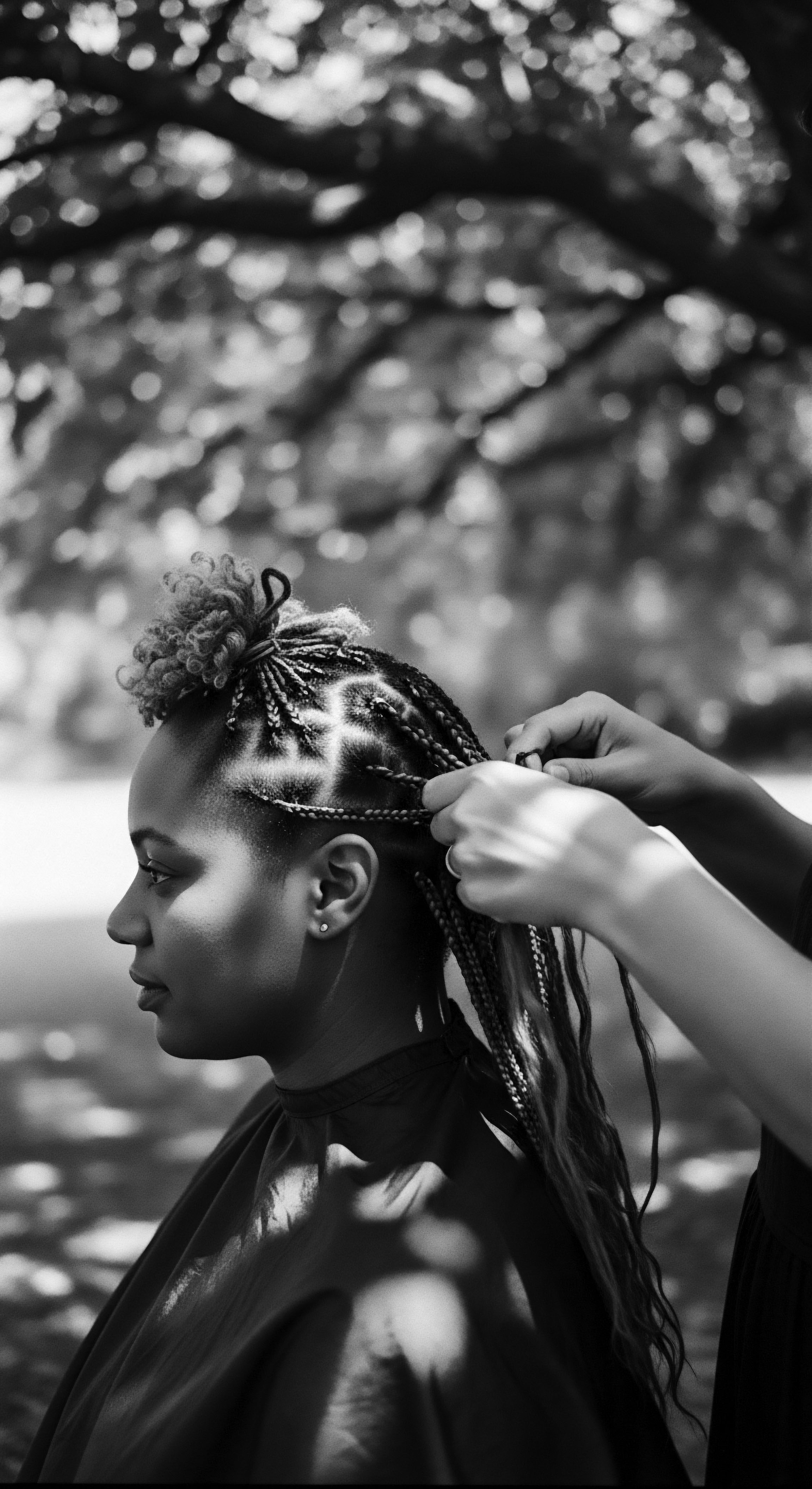
References
- Cunningham, A. B. (2018). African Herbal Medicine ❉ An Introduction to Medicinal Plant Knowledge in the African Continent. Earthscan.
- Diop, Taïb. (1996). Les Plantes Medicinales, Sénégal.
- Dye, Jane. (1992). Aromatherapy for Mother and Child. C.W. Daniel Company.
- Falconi, Dina. (1998). Earthly Bodies and Heavenly Hair. Ceres Press.
- Hampton, Aubrey. (1997). Natural Organic Hair and Skin Care. Organica Press.
- Tella, A. (1979). Studies on the anti-inflammatory properties of shea butter. Planta Medica, 36(07), 324-329.
- Karite Shea Butter. (n.d.). The African Gold ❉ A Journey into the World of Shea Butter.
- Rajbonshi, P. (2021). Shea Butter ❉ A Review. Journal of Pharmacy Research, 10(4), 180-184.
